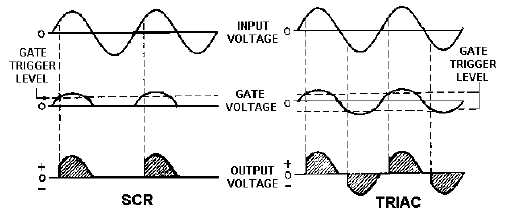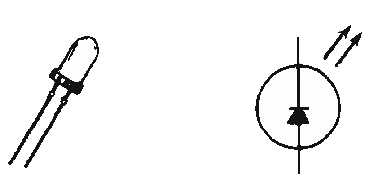3-27
Figure 3-26.—Comparison of SCR and TRIAC waveforms.
Q17. The TRIAC is similar in operation to what device?
Q18. When used for ac current control, during which alternation of the ac cycle does the TRIAC control
current flow?
Optoelectronic Devices
OPTOELECTRONIC devices either produce light or use light in their operation. The first of these,
the light-emitting diode (LED), was developed to replace the fragile, short-life incandescent light bulbs
used to indicate on/off conditions on panels. A LIGHT-EMITTING DIODE is a diode which, when
forward biased, produces visible light. The light may be red, green, or amber, depending upon the
material used to make the diode.
Figure 3-27 shows an LED and its schematic symbol. The LED is designated by a standard diode
symbol with two arrows pointing away from the cathode. The arrows indicate light leaving the diode. The
circuit symbols for all optoelectronic devices have arrows pointing either toward them, if they use light,
or away from them, if they produce light. The LED operating voltage is small, about 1.6 volts forward
bias and generally about 10 milliamperes. The life expectancy of the LED is very long, over 100,000
hours of operation.
Figure 3-27.—LED.
LEDs are used widely as "power on" indicators of current and as displays for pocket calculators,
digital voltmeters, frequency counters, etc. For use in calculators and similar devices, LEDs are typically
placed together in seven-segment displays, as shown in figure 3-28 (view A and view B). This display



